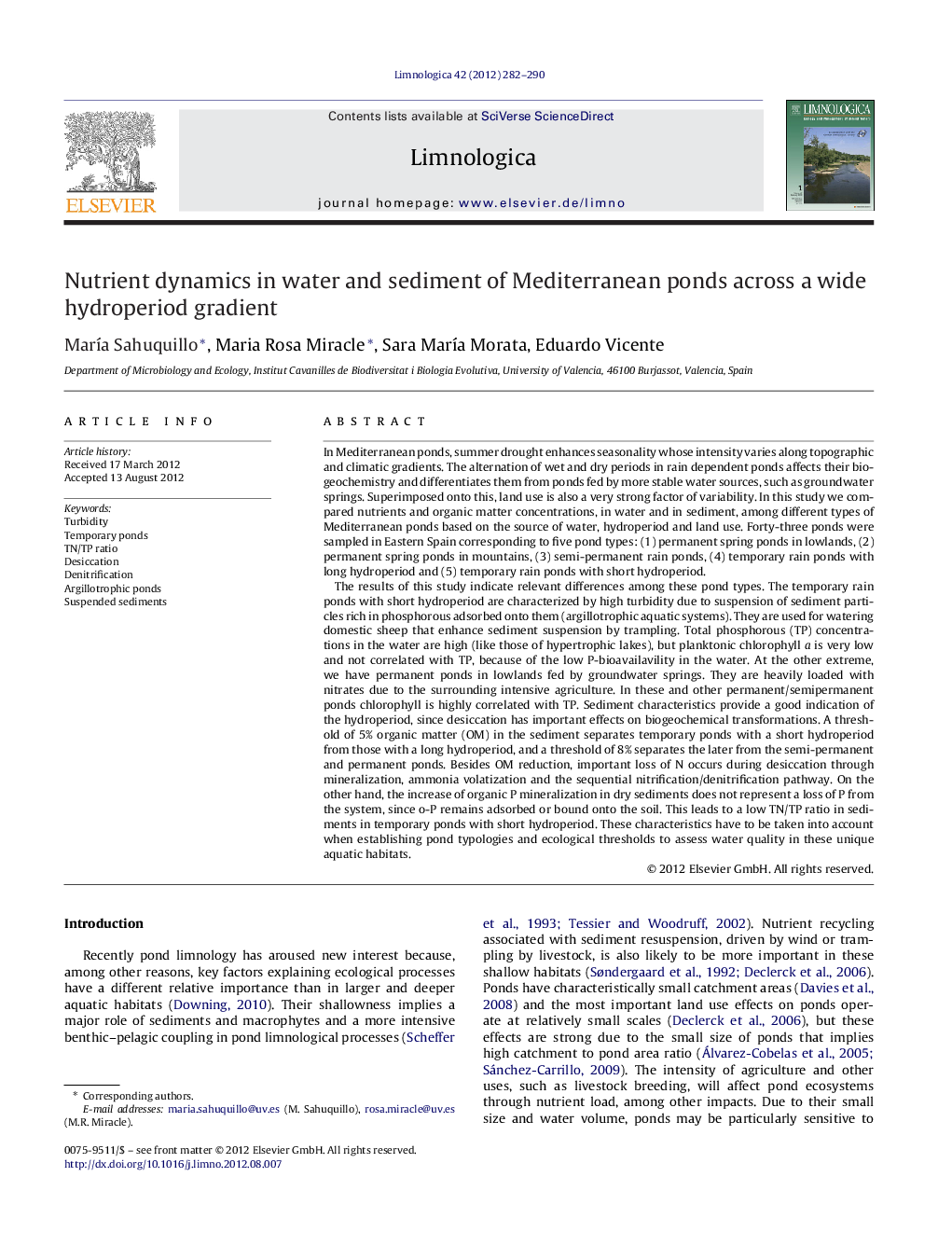| Article ID | Journal | Published Year | Pages | File Type |
|---|---|---|---|---|
| 4400399 | Limnologica - Ecology and Management of Inland Waters | 2012 | 9 Pages |
Abstract
The results of this study indicate relevant differences among these pond types. The temporary rain ponds with short hydroperiod are characterized by high turbidity due to suspension of sediment particles rich in phosphorous adsorbed onto them (argillotrophic aquatic systems). They are used for watering domestic sheep that enhance sediment suspension by trampling. Total phosphorous (TP) concentrations in the water are high (like those of hypertrophic lakes), but planktonic chlorophyll a is very low and not correlated with TP, because of the low P-bioavailavility in the water. At the other extreme, we have permanent ponds in lowlands fed by groundwater springs. They are heavily loaded with nitrates due to the surrounding intensive agriculture. In these and other permanent/semipermanent ponds chlorophyll is highly correlated with TP. Sediment characteristics provide a good indication of the hydroperiod, since desiccation has important effects on biogeochemical transformations. A threshold of 5% organic matter (OM) in the sediment separates temporary ponds with a short hydroperiod from those with a long hydroperiod, and a threshold of 8% separates the later from the semi-permanent and permanent ponds. Besides OM reduction, important loss of N occurs during desiccation through mineralization, ammonia volatization and the sequential nitrification/denitrification pathway. On the other hand, the increase of organic P mineralization in dry sediments does not represent a loss of P from the system, since o-P remains adsorbed or bound onto the soil. This leads to a low TN/TP ratio in sediments in temporary ponds with short hydroperiod. These characteristics have to be taken into account when establishing pond typologies and ecological thresholds to assess water quality in these unique aquatic habitats.
Related Topics
Life Sciences
Agricultural and Biological Sciences
Aquatic Science
Authors
MarÃa Sahuquillo, Maria Rosa Miracle, Sara MarÃa Morata, Eduardo Vicente,
